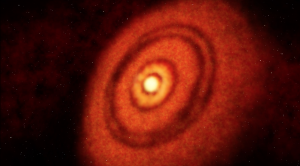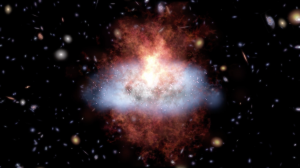The National Radio Astronomy Observatory (NRAO) has enabled forefront research into the Universe at radio wavelengths for more than sixty years. Thus, inspired by dramatic discoveries with the research facilities of the NRAO and its international partners, a much more capable next-generation Very Large Array (ngVLA) is being designed and developed to open vast new discovery space, enabling scientists to directly image the formation of Earth-like planets, trace the complex organic molecules in star-forming regions, unravel the dense gas history of the Universe during the key epoch of galaxy assembly, probe fundamental physics, and much more. The design and development of this next-generation Very Large Array is being led by members of the astronomy community working in close collaboration with the NRAO scientific, technical, and senior management staff, and could achieve full science operations by mid-2034.The National Radio Astronomy Observatory is a facility of the National Science Foundation operated under cooperative agreement by Associated Universities, Inc
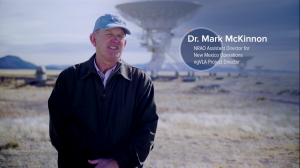
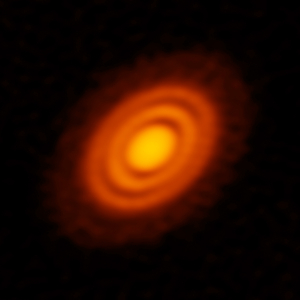
ALMA Finds Compelling Evidence for Pair of Infant Planets around Young Star
ALMA image of the protoplanetary disk surrounding the young star HD 163296 as seen in dust. New observations suggested that two planets, each about the size of Saturn, are in orbit around the star. These planets, which are not yet fully formed, revealed themselves by the dual imprint they left in both the dust and the gas portions of the star’s protoplanetary disk.
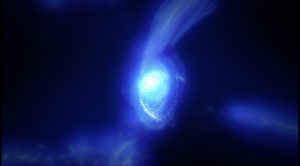
Simulation of Galaxy MACS1149-JD1
Computer graphics movie of the star formation history in the galaxy MACS1149-JD1. The self-gravitating nature of matter creates filamentary structures and the density at the intersections of the filaments increases. Around 200 million years after the Big Bang, active star formation ignites in the high density regions, which leads to the formation of galaxies. The gas in the galaxy is blown off by active stellar wind and supernovas, then the gas returns to the galaxy and causes another burst of star formation. Credit; ALMA (ESO/NAOJ/NRAO)
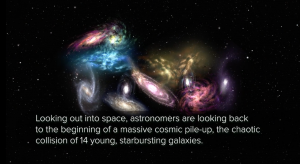
ALMA Sees Cosmic Collision
Peering deep into space — an astounding 90 percent of the way across the observable universe — astronomers have witnessed the beginnings of a gargantuan cosmic pileup, the impending collision of 14 young, starbursting galaxies. This ancient megamerger is destined to evolve into one of the most massive structures in the known universe: a cluster of galaxies, gravitationally bound by dark matter and swimming in a sea of hot, ionized gas.






